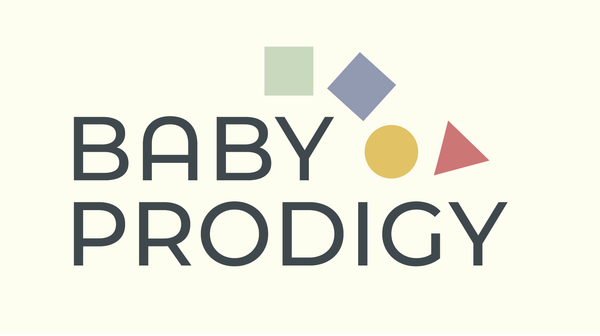The notion of “What is Montessori?” invites not just a definition but an exploration of an educational philosophy rooted in empirical observation, systematic structure, and developmental peace-building. In this article, we unpack the idea behind the term, trace its origins, articulate its key components, examine its rationale, consider its practical application and limitations, and finally summarise its relevance for today’s educational challenges.
Since the early 20th century, the programme known as the Montessori method has been adopted across the globe. Developed by Maria Montessori in Italy, it emphasises children’s natural tendencies to explore, learn, and construct their own understanding of the world. Yet the question “What is Montessori?” persists: is it simply “child-centred learning,” or does it represent a distinct education theory with systematic underpinnings and measurable outcomes? The answer lies in both its philosophical roots and its empirical implementation.
Origins of Montessori
The Montessori method first emerged in the early 1900s when Maria Montessori applied her medical and psychological background to education. The founding point was the first “Children’s House” (Casa dei Bambini) in Rome, where she observed children in informal activities and designed environments to support their growth.
Montessori’s approach challenged traditional teacher-led instruction, instead emphasising observation, freedom, and self-directed activity within a structured environment. Her work was not merely intuitive—she treated the classroom as a “laboratory” for observing human development, systematic in design and empirical in methodology.
Key Principles of Montessori
Here we delineate the core principles that answer the question “What is Montessori?” in a theoretical-systematic sense.
1. Respect for the child’s individual development
Each child is recognised as unique, progressing at their own pace without forced uniformity.
2. Absorbent mind and sensitive periods
Montessori proposed that children have an “absorbent mind” during early years and pass through “sensitive periods” where specific skills naturally emerge.
3. Prepared environment
A carefully structured, attractive, and accessible environment fosters exploration and independence.
4. Freedom within limits
Children enjoy freedom of movement and choice, but within a framework of order and respect.
5. Mixed-age classrooms
Multi-age settings encourage collaboration, mentoring, and community responsibility.
6. Teacher as guide
Educators serve as observers and facilitators rather than direct instructors.
7. Sensorial and practical life materials
Hands-on materials help children refine senses and build cognitive foundations.
How the Montessori Method Works
To truly understand “What is Montessori?”, we must observe its operation in practice. A Montessori classroom is a dynamic ecosystem: children independently select materials, engage in self-paced work, and practice concentration through repetition. Teachers demonstrate, then step back, observing silently to let the child’s curiosity unfold.
This process supports deep engagement, problem-solving, and self-correction—skills essential for lifelong learning. Montessori’s empirical focus on observation rather than instruction remains one of its most revolutionary aspects.
Rationale: Why Montessori?
The Montessori philosophy rests on the belief that children are intrinsically motivated to learn. It encourages independence, self-discipline, and respect—qualities that extend far beyond early education.
It also aligns with developmental psychology, showing that autonomy and active engagement enhance memory, problem-solving, and creativity. Modern neuroscience echoes this by demonstrating that choice and repetition strengthen neural pathways, supporting Montessori’s century-old claims.
Limitations and Critical Considerations
While Montessori offers a robust framework, it’s not immune to criticism. Implementation varies widely because “Montessori” isn’t a protected trademark. Some schools use the name without adhering to the core principles.
Additionally, the approach requires well-trained teachers and specialised materials, which can make access difficult for some communities. Certain learners may also benefit from more structured environments, highlighting the need for flexibility within the method.
Practical Applications in Today’s Context
Today, Montessori principles are applied not only in schools but also at home. Parents create “prepared environments” with child-sized furniture, open shelves, and accessible materials. Teachers in traditional settings adopt Montessori-inspired elements—like open-ended exploration and peer learning—to enrich their classrooms.
In the digital age, where distraction is ubiquitous, Montessori’s emphasis on focus, patience, and hands-on engagement offers a powerful counterbalance. It cultivates mindfulness, independence, and resilience in a technology-saturated world.
Scenario Example
A 4-year-old chooses the “pink tower” activity. After a brief demonstration, the teacher steps back. The child stacks cubes from largest to smallest, self-corrects errors, and repeats until satisfied. Later, they transition to pouring exercises, then language work—all self-initiated. This illustrates autonomy, order, and purposeful engagement—the essence of Montessori learning.
How to Evaluate a Montessori School
When assessing whether a school is truly Montessori, consider these points:
-
Mixed-age classrooms (e.g., 3–6, 6–9 years).
-
Teachers act as guides, not lecturers.
- Materials are tactile, self-correcting, and arranged at child level.
- Classrooms are calm, orderly, and aesthetically appealing.
- Uninterrupted work periods of at least 2–3 hours.
-
Educators have accredited Montessori training.
These indicators distinguish authentic Montessori institutions from imitations.
Conclusion
So, what is Montessori? It is a scientifically grounded educational philosophy designed to nurture the whole child—intellectually, emotionally, and socially. Rooted in respect, observation, and independence, Montessori education develops confident learners equipped for a lifetime of discovery.
As an empirical and logical system, Montessori bridges early learning with lifelong development. It stands as one of the most relevant, research-aligned approaches in contemporary education—proving that when children are trusted, guided, and respected, they thrive.
Key Takeaways
-
Montessori education is child-centered, self-directed, and rooted in respect for natural development.
-
The method combines freedom with structure to build focus, independence, and responsibility.
-
Authentic Montessori schools use specific materials, trained guides, and mixed-age settings.
-
Research supports Montessori’s role in improving academic and social outcomes.
- Implementation quality and accessibility remain key challenges.
Nurture your child’s curiosity and creativity with safe, sustainable, and Montessori-inspired wooden toys from BabyProdigy.co — where purposeful play meets mindful design. Explore our handcrafted, non-toxic collections today and help your little one learn, grow, and thrive naturally.

